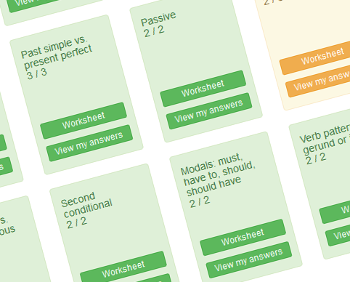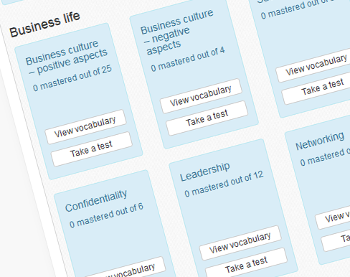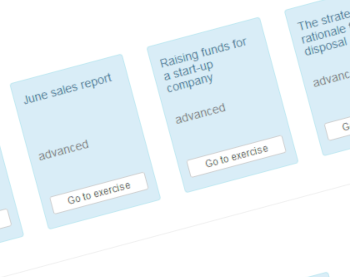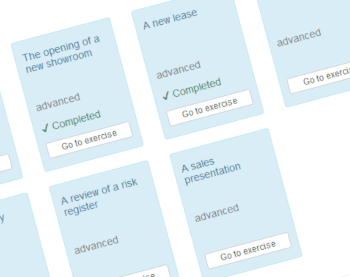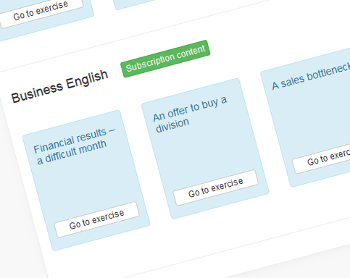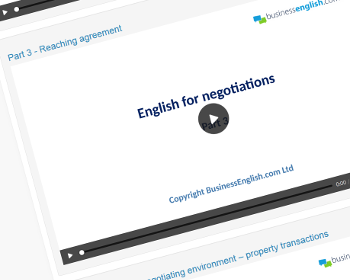Future perfect continuous
(Future perfect continuous)
Wstep
Future Perfect Continuous używamy do opisania akcji ciągłej, będącej w trakcie wykonywania w danym punkcie w przyszłości.
Konstrukcji tej często używa się z przyimkiem "for", aby określić czas między chwilą, w której dana akcja miała swój początek, a momentem w przyszłości, w którym będzie kontynuowana lub w którym według naszych przewidywań dobiegnie końca.
Future Perfect Continuous może służyć do opisania akcji ciągłej, która według naszych przewidywań lub przekonań jest w trakcie wykonywania.
Przykłady
- "At the end of December, James will have been working at the company for a year."
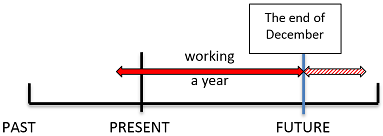
- "By the time my sister arrives at the airport, I will have been waiting for over three hours."
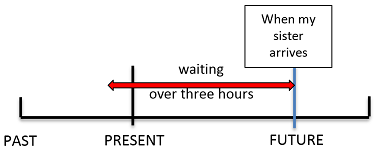
- "Sarah won't have been reading her emails because she’s on holiday."

Forma
Future Perfect Continuous tworzymy przy użyciu "will have been" + czasownika głównego w formie "-ing" .| Pozytywny |
I
You We They He / She / It |
will have been | waiting | for 3 hours. |
| Negatywny |
won't have been
will not have been |
| pytanie | Will |
I
you we they he / she / it |
have been | waiting | for 3 hours? |
Future Perfect Continuous , używany w odniesieniu do przyszłych wydarzeń lub okresów czasu, występuje często z takimi wyrażeniami jak "when" lub "by the time (something happens)" oraz "for how long".
Przykłady
- "I will have been reading this book for months by the time I finally finish it."
- "She won’t have been expecting you to arrive so early."
- "When you finish your exams, for how long will you have been studying English?"
Praktyka
.Dalsza praktyka
Wybierz odpowiedź a, b, c lub d, tworząc zdanie w Future Perfect Continuous:.
Create a free Getting Started account
Powiązane linki
W poniższych ćwiczeniach wykorzystano następujące struktury gramatyczne:
To również może cię zainteresować:
- Angielski biznesowy: ćwiczenia ze słownictwa
- Scenario-based dictation exercises – business English Pakiet Pro
To również może cię zainteresować:
Początkujący
- Czas przeszły prosty
- Czas przeszły ciągły
- Czas teraźniejszy prosty
- Czas teraźniejszy ciągły (teraźniejszy)
- Czas teraźniejszy złożony
- 'Going to' i 'will'
- Czas teraźniejszy ciągły (przyszły)
- Tryb rozkazujący
- Forma “to be”
- Zaimki: przedmiot, podmiot
- Zaimki względne
- Przymiotniki i zaimki: dzierżawcze
- Przymiotniki i zaimki: wskazujące
- Podstawowy szyk przymiotników
- Pytania WH (zaimki pytające)
- Rodzajniki: a, an, the
- Przyimki: czas i miejsce
- Jest i są (there is/there are) oraz określniki ilościowe
- Spójniki i, lub, ale (and, or, but)
- Stopień wyższy i stopień najwyższy (niż)
- Zerowy okres warunkowy (if)
- Pierwszy okres warunkowy (if)
- Czasowniki modalne: mogę/nie mogę, mógłbym, zrobię, powinienem (can/can't, could, will, shall)
- Składnia czasowników
- Sequence adverbs
Średnio zaawansowany
- Czas przeszły złożony
- Czas przeszły prosty vs. teraźniejszy złożony
- Czas przeszły prosty vs. przeszły ciągły
- Czas teraźniejszy złożony ciągły
- Czas przyszły prosty
- Czas przyszły ciągły
- Strona bierna
- Mowa zależna
- Forma used to/would
- Drugi okres warunkowy
- Trzeci okres warunkowy
- Zdania względne
- Zaimki zwrotne
- Czasowniki modalne: muszę, trzeba, powinienem, powinienem był (must, have to, should, should have)
- Składnia czasowników: -ing czy bezokolicznik
- Przysłówki stopnia
- Kolejność przymiotników
- Przymiotniki: ed czy ing
Gramatyka
Szybko zidentyfikuj i skup sie na zagadnieniach gramatycznych:
- Arkusze gramatyczne i test
- Scenario-based grammar exercises
- Grammar additional practice questions
- Ćwiczenia z odmiany czasowników
- Ćwiczenia z okresów warunkowych
Popraw swoją gramatykę
Slownictwo
Vocabulary exercises:Wzbogac swoje slownictwo dzieki naszym trzem trenerom slówek:Ćwicz pisownię, korzystając z naszych trzech testów z pisowni:Przećwicz słownictwo związane z grafami i wykresami:
Ucz się słownictwa
Ćwiczenia ze słuchu
Szlifuj swoja umiejetnosc sluchania i poprawna pisownie dzieki naszym cwiczeniom ze sluchu:
- Scenario-based dictation exercises - general English
- Scenario-based dictation exercises - business English
- Ćwiczenie ze słuchu: skup się na gramatyce
- Liczby
Uzupełnij ze słuchu
Lekcje wideo
Skup sie na konkretnych aspektach angielskiego w biznesie korzystajac z naszych lekcji wideo:
Obejrzyj lekcję video
